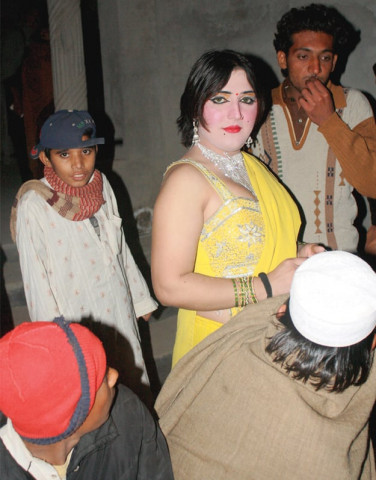
A grainy cellphone video of that dance, shot by a guest at the wedding, made its way through dozens of phones and computers to her brother and father. By the next day, seven people had been killed, including men from the host family. The video maker (fortunately for her) remained unidentified. Unlike a very similar case in Kohistan, this one, taking place in the village of Dawood Shah Gala Khel, stayed below the media’s radar.
A few days later, there I was in the same village, a fifteen minute drive from Miranshah, ready to attend a wedding with a camera and handycam in my hands.
Getting there had been an experience in itself. To me, the best part about driving from Lahore to K-P (or North Waziristan in this case) is the loud Pashto music blaring from the speakers and reverberating through the body of the car. Raees Bacha sounds good, Nazia Iqbal sounds even better.
It’s not just the scenery that changes as you get closer to the tribal areas. Speeding vans stuffed with passengers — with burqa-clad women stuffed further inside and men hanging from the iron grilles — become a common sight. When they race past you, the wind carries scattered notes of Pashto music to your ears. They hang in the air for a moment and then are lost; until the next van whizzes by.
Our lunchtime stop, along the banks of Lake Chashma, was quite edifying. There are a string of fried fish restaurants here and the one we stopped at just so happened to be run by Asif, a former personal cook for none other than General Ziaul Haq and Dr Abdul Qadeer Khan.

As we devoured the fish, he told us that Dr AQ Khan still stops to eat here every time he is in the area, and by the time we were on our third helping, I had no problem in believing this claim. With our bellies now full of fish, we embarked on the last leg of our journey.
The cell phone video incident had left a tangible air of insecurity and distrust around the village. Every woman entering the wedding house was carefully frisked and cell phones with cameras were confiscated by an intimidating woman, to be returned only when the guests left.
“No one wants more videos or broken bones or their sons and brothers killed. This is a matter of honour for us now and we have to be very careful,” said the woman frisking the guests as I stood beside her, sticking name labels on the confiscated cell phones.
Being a part of the groom’s family, I was allowed to hold onto my camera, so long as I only took photos of the women of my family alone. Even then, indignant comments and intimidating remarks followed me as I carefully clicked away. Not far away, hundreds of cell phone cameras clicked and flashed as pictures were taken and movies made as the men enjoyed the bachelor’s party at the baithak (men’s drawing room). There, eight flamboyantly dressed eunuchs danced and gyrated to Pashto music as the men cheered and hooted.

We stayed at a relative’s house in the same village. The window in the room was covered with a cardboard sheet that I removed minutes after I settled in. The room now filled with fresh air, and saw its first rays of sunlight in what must have been years. Houses in Bannu don’t typically have first storeys, and if they do, the windows are permanently covered with thick fabric or cardboard sheets nailed to the wall, negating the very purpose of windows. The few first storey houses are normally surrounded by unusually high walls with bricks removed from a couple of “safe” places by the women to allow for short ‘peek-a-boos’ at the roads or neighbouring houses. I tried to peek from one such opening while visiting some distant relatives, but my eyes could only see the sky at a 180-degree angle due to the depth of the wall and what the women called “lack of practice”.
Besides the Khost Road, the newly unblocked window also gave me a clear view of Baitullah Mehsud’s ancestral home a few metres away. A humble single storey mud house, it is now home to Mehsud’s cousins and their families.
Before I introduced myself as a journalist, the women welcomed me graciously into the house. However, they apologetically refused to interact after my professional introduction, saying they were ordinary people and did not want to say anything that could land them in the news.

“We have nothing to do with militancy or militants,” the woman who had earlier welcomed me into the house said.
As I saw the men running around busy making arrangements at the venue, the young boys appeared especially ecstatic. While the women and the girls will dance to drum beats at the night of the mehndi ceremony at the house, the men and the boys will enjoy a show of a different kind.
Arrangements were completed hours before the show was scheduled to begin. There was a music system, gargantuan speakers, disco lights, power generators and armed men to guard the entrance of the baithak.
By the time the eunuchs appeared, the crowd had swelled to some three thousand men and the hooting and clapping could be heard all the way in the zenana, giving the women a hint that the show had begun.
Of course, I needed more than just the soundtrack and so I found a convenient window, turned out the lights and wrapped myself in a black dupatta. Now in full stealth mode, I got a somewhat hampered view of the ‘forbidden’ men’s section. Then my aunt showed up and hustled me on to the roof where we got a birds-eye view. This was part of a trade-off between my aunt and her husband, who was only given permission to attend the dance if she was able to spy on him!

The party in the baithak continued till 3am, not decreasing even a decibel in its intensity. The venue sparkled with camera flashes from iPhones, Galaxies and HTCs alike. The eight eunuchs were hired to dance for Rs3,000, but they went home with Rs150,000 that night, thanks to all the money they were showered with. Notes of 20s and 50s were most common, but there were 100s and 1000s, too. For every note of more than Rs50, the dancers’ ‘collector’ would return the difference while keeping 20 percent with him, so for every Rs1,000 showered at the dancers, the thrower was returned Rs800.
The collector — a petite and slender man in his fifties — was actually more agile and skilled than the dancers themselves. While they stomped and threw their limbs about, he sidestepped and hopped, bending low to grab the notes fluttering all around him. Some he grabbed while in flight, but others had to be plucked from the damp ground. Practice makes perfect, and with these dancers in such demand (there is hardly a night when they are not booked for a performance) he gets a lot of practice.
The June 2012 killing of the Pashto music sensation, Ghazala Javed, shook the entertainment industry of the province. People, especially those living close to the tribal area, now think twice before arranging musical functions that include dancers. In 2009, a famous Pashto singer, Shabnam, was dragged out of her house by militants in Swat and executed publicly. It was then that Ghazala Javed’s family fled the area and settled in Peshawar, not knowing that death awaited her in the dark, narrow streets of Peshawar’s Dabgari Garden.

The morning after the dance performances, some of the family’s boys found a hand grenade on the road behind the baithak. Fortunately, whoever had thrown it had done a sloppy job and it failed to detonate. The ring was broken, but the pin was still wedged inside the bomb. I got a chance to hold it in my hands and a close relative, who clearly knew his explosives, defused it.
Sidra, who is in her 20s, was the most prominent dancer that night. Dressed in fancy orange clothes, she danced barefoot on the uneven ground that was damp from dew. Even from the distance, my eyes were drawn to her arms, where she had made an attempt to cover what looked like burn marks with foundation and base creams. It didn’t work.

A discussion with her later revealed that some men in the village would regularly break into the house in which she and her fellow dancers lived. They would beat them and take away all their earning. She said they didn’t dare retaliate since they could not afford being thrown out of the village. The marks were souvenirs from these repeated ‘visits’.
“You know what our problem is? We do not save money. We spend whatever we earn on ourselves and those we are in a relationship with. We spend on them because we need men to protect us.”
As we sat in the lawn of her house two days later, Sidra and her colleagues’ generosity was on full display. A cake from a famous bakery in Bannu lay uncut on the charpoy. Halwa, cut into neat cubes, was decoratively placed in a circular pattern on a glass plate along with some sweets and dry fruit. Milk tea and green tea were both served.
Sidra was leaving for Peshawar that day, where she was invited to dance at a wedding. Her boyfriend waited outside ready to drop her at the bus stop, carrying a blanket he had bought especially for her just a few hours back. He did not want her to use someone else’s blanket or stay without one in the chilling cold, and would not relent until she took it from him. The way they dealt with each other proved that love transcends all boundaries, whether those of caste, religion or gender.

That night we ourselves drove to Miranshah to bring the bride to her new home. Some 30 cars and vans stuffed with the groom’s immediate and extended family stopped in front of the bride’s house, but only three women went in. After around 10 minutes, they appeared with the bride. Before we knew it, we were back at the groom’s house being welcomed by volleys of aerial firing by the groom’s brothers, cousins and friends. Apart from handguns, there were G3s and AK-47’s on display as well. Inside a room, an elderly mullah waited for the couple to perform the nikah. Unlike in other parts of the country, the nikah ceremony here is conducted in the groom’s house. The bride, accompanied by at least one elderly woman of her family, is given three options to choose from among her witnesses. Out of these three, who are all from the grooms’ brothers or cousins, she then selects one to become her “nikah brother” as they call it. The ‘nikah brother’ then swears to take the bride’s side for the rest of his life if an argument ever occurs between the couple. From here on, he will be responsible for the bride’s protection at her new home and will ensure that her husband treats her well.
The nikah was performed, and then ensued enough aerial firing to drown a drone. When the house finally emptied out, I saw some children picking up bullet shells that they would later use to play with.
On the way back, some locals decided to accompany us to Lahore, where they had some business. This wasn’t surprising as Pashtuns will never miss an opportunity to travel in groups. Even though we took the same route as before, we seemed to encounter far more police pickets this time. Later we realised that this was because of our travelling companion’s Toyota Corolla, noticing that until we crossed the border into Punjab, every Corolla –whether new or old — would get the full checking treatment from the cops
At the third picket we finally found out why. A policeman told us it was to monitor the smuggling of corollas from Afghanistan into Pakistan through Miranshah. Pashtuns love their Corollas it seems, and this makes both Pakistan and Afghanistan a huge market for Toyota. “We’ve caught three smuggled cars today alone,” the cop told us.
The incessant checking turned an otherwise eight-hour journey into a twelve hour ordeal, but at least our car was spared such scrutiny. Despite being a full-blooded Corolla loving Pashtun girl, this was the one and only time I was thankful for my husband’s love of Hondas!
Published in The Express Tribune, Sunday Magazine, February 10th, 2013.
Like Express Tribune Magazine on Facebook to stay informed and join the conversation.

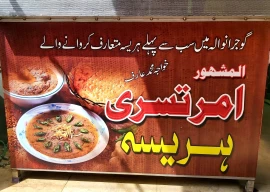
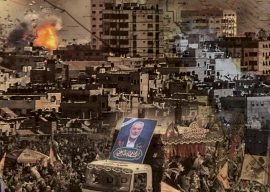
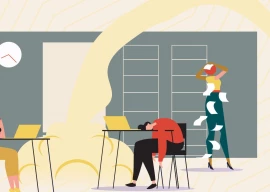


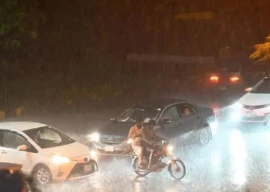



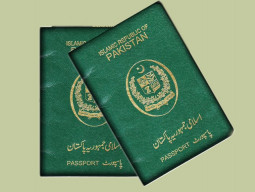
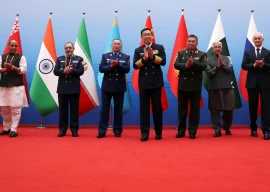






COMMENTS
Comments are moderated and generally will be posted if they are on-topic and not abusive.
For more information, please see our Comments FAQ